The Klimt Family
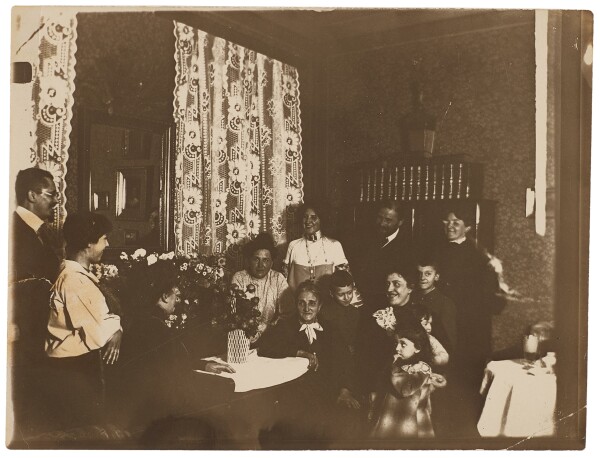
70th birthday of Anna Klimt with her family, 01/27/1906, ARGE Sammlung Gustav Klimt, Dauerleihgabe im Leopold Museum, Wien
© Leopold Museum, Vienna
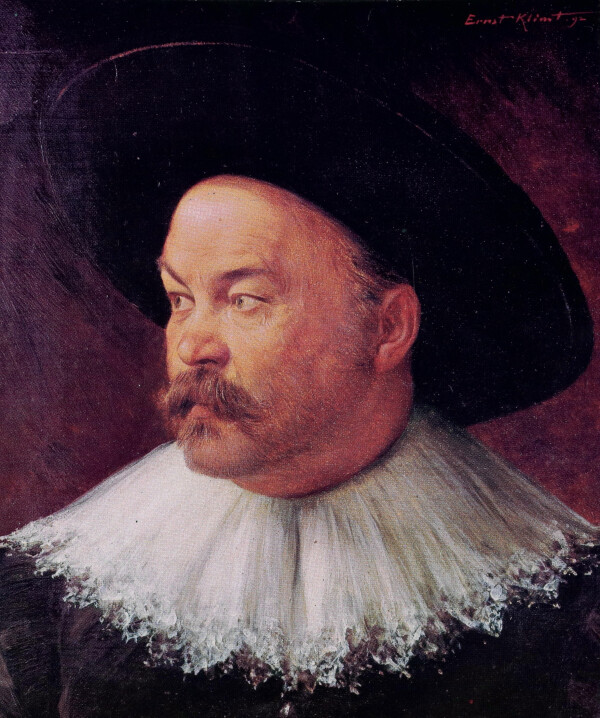
Ernst Klimt: Portrait of his father Ernest Klimt Sr. in Dutch costume, 1892
© Klimt Foundation, Vienna
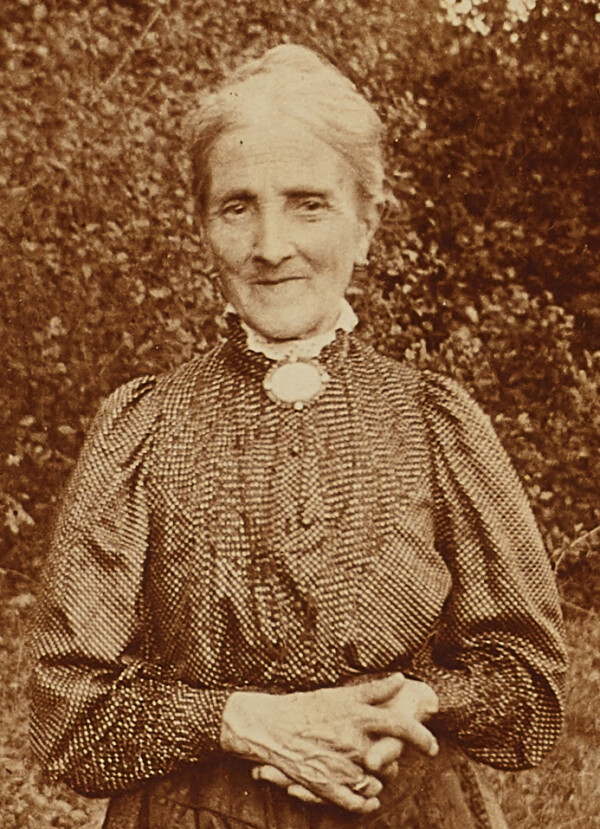
Anna Klimt senior (detail)
© Leopold Museum, Vienna
Gustav Klimt was born on 14 July 1862 in Baumgarten near Vienna, the first son of the gold engraver Ernest Klimt sen. and his wife Anna Klimt (née Finster). The couple had seven children, but only six of them made it to adulthood. The close ties Gustav Klimt had with his family are documented by numerous portraits, his correspondence as well as the many joint projects undertaken by the Klimt brothers.
Ernest Klimt and Anna Klimt – From Cradle to Artist
Ernest Klimt sen. was born in 1834 in Prague. He came to Vienna with his parents as a child and trained as a gold engraver. On 17 July 1860, he married Anna Rosalia Finster who was born in Vienna. Their first child, Klara, was born that year. Their first son, Gustav, was born on 14 July 1862, followed by Ernst jun., Georg, Hermine, Anna and Johanna Klimt.
The father being a craftsman, the Klimts were never wealthy, but they lost what savings they had through speculations surrounding the Word’s Fair in Vienna (1873). The children thus grew up in impoverished conditions. The family was forced to move repeatedly, as they could not afford to pay the rent. The Klimts were hit by another blow of fate barely a year later, when Gustav’s little sister Anna died, aged only 5, in 1874.
Owing to the father’s profession as an engraver, we can assume that he wished his sons to embark on an artistic career as well. Gustav and his brother Ernst jun., who were both very talented, were to become drawing instructors, and thus enrolled at the Imperial-Royal School of Arts and Crafts (now University of Applied Arts Vienna). Seeing as they both exceeded all expectations, they transferred in 1878 to the Drawing and Painting Class, where they were trained to become academic painters.
The youngest brother, Georg Klimt, also started studying at the Imperial-Royal School of Arts and Crafts in 1889. He learnt the art of molding and chasing, and subsequently worked as a metal sculptor. As soon as the young artists received their first paid commissions, the three brothers were able to provide financial support to the family. During their years of study, the Klimt brothers created numerous portraits of their parents and siblings. Ernst and Gustav further modeled individual figures in their commissions on friends and family members. To this end, photographs showing the Klimt siblings in historical costumes were created at the studio the Klimt brothers shared with Franz Matsch (their friend and colleague). In the painting Hanswurst Delivering an Impromptu Performance in Rothenburg (1892–1894, private collection), for instance, we can recognize Klara, Hermine, Georg, Johanna and Anna Klimt sen. among the audience members.
In 1892, the family was struck by two further blows of fate. Ernest Klimt sen. died in July, while the newly married Ernst Klimt jun., who was only 28 years old, passed away in December. As the oldest son, Gustav dutifully assumed guardianship of his mother and two unmarried sisters Hermine and Klara. Together, they moved into an apartment at Westbahnstraße 36. In a letter to Maria Zimmermann, he explained that this had been his father’s dying wish:
“[…] I am to provide for my poor mother and unmarried sisters; crying, my father entrusted them to my care on his deathbed, and asked me never to leave them.”
Klimt also became guardian to his niece Helene “Lentschi” Klimt, the daughter of his deceased brother Ernst, who was barely half a year old at the time of her father’s death.
Around 1897/98, Gustav Klimt, who had just started to make a name for himself as a portrait painter, executed a large-scale painting of his mother (Portrait of Anna Klimt, 1897/98, whereabouts unknown) and a portrait of his niece Helene Klimt jun. (Portrait of Helene Klimt, 1898, private collection). In February 1915, Anna Klimt sen. died at the age of 81. Georg, Hermine, Klara and Johanna would survive their famous brother, and write numerous memoirs about his life and oeuvre.
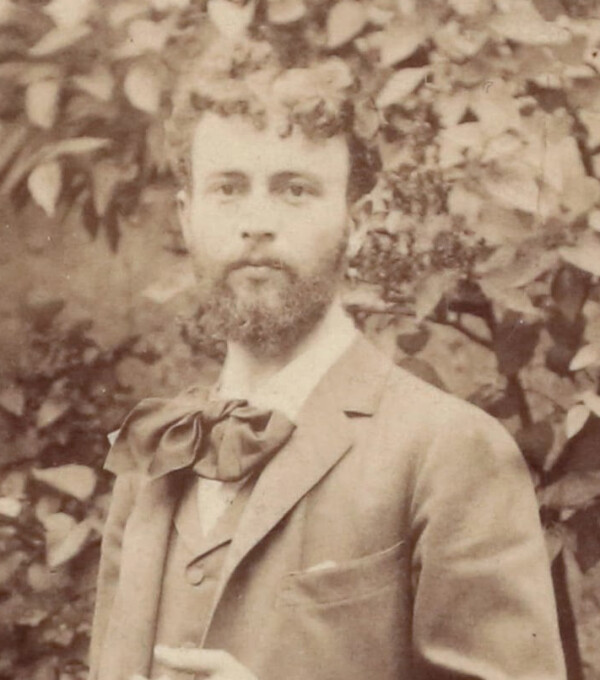
Ernst Klimt photographed by Carl Schuster (detail), probably 1892
© Klimt Foundation, Vienna
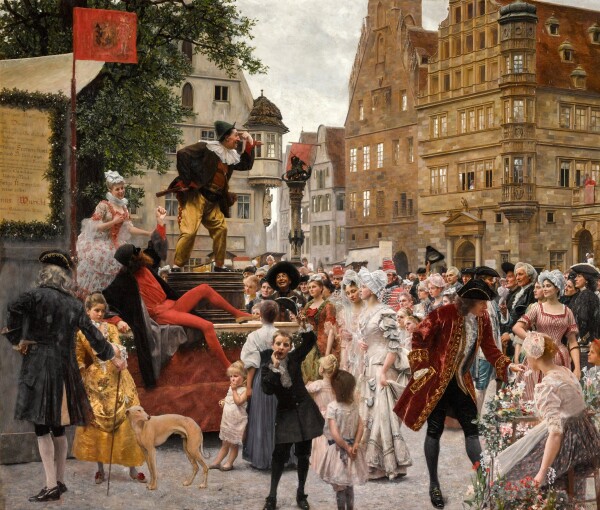
Gustav Klimt: Hanswurst Delivering an Impromptu Performance in Rothenburg, 1892-1894, private collection
© Sotheby's
Ernst Klimt (1864–1892) and Gustav Klimt (1862–1918) as a Painter Duo
The brothers Gustav and Ernst Klimt had an intimate relationship, both on a private and professional level. Having met Franz Matsch at the Academy, the three young artists decided to join forces as an artists’ collective, which is generally referred to in research on Klimt as “Künstler-Compagnie.” From 1882 to 1892, the three of them primarily worked on decorative commissions. Among their most important projects were the painterly decoration of the staircase of the newly built Burgtheater and the creation of the spandrel paintings in the stairwell of the Kunsthistorisches Museum.
In 1891, Ernst Klimt married Helene Flöge, one of three daughters of a wealthy Viennese industrialist. Their daughter, also named Helene but called “Lentschi,” was born a year later. This connection not only helped the “Künstler-Compagnie” to gain access to the Viennese upper classes but also introduced Gustav Klimt to Emilie Flöge. The ensuing intimate relationship between Gustav and his sister-in-law’s sister would last for the rest of the artist’s life.
After the death of Ernst Klimt in 1892, Gustav assumed the guardianship of his niece, making him a full-fledged member of the Flöge family.
Ernst Klimt left the painting Hanswurst Delivering an Impromptu Performance in Rothenburg unfinished on the easel. Gustav Klimt was determined to complete the work for his brother. Just how difficult this turned out to be, was handed down by his sister Hermine:
“Every time he set out to start, he found he couldn’t; he was getting desperate. Returning home, he would say: ‘I cannot finish it!’”
Finally, Klimt did manage to complete the painting, and exhibited it in 1895 at the “XXIII. Jahresausstellung der Genossenschaft der bildenden Künstler Wiens” [“23rd Annual Exhibition of the Künstlerhaus”] under his brother’s name.
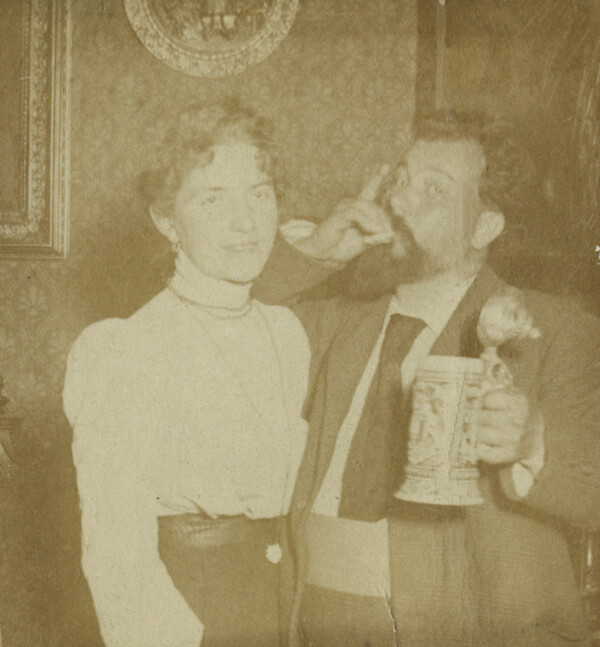
Georg and Franziska Klimt
© Belvedere, Vienna
Georg Klimt (1867–1931)
Like his two older brothers, Georg Klimt also decided to embark on an artistic career. Rather than as a painter, he trained as a metal sculptor and medalist. Georg worked as a freelance artist from 1896, and started teaching at the Women’s Art School in Vienna (from 1926 Viennese Women’s Academy). It wasn’t only Ernst and Gustav who worked together on commissions; their youngest brother, too, was often involved in joint projects. For example, Georg created the frame for Gustav Klimt’s work Judith I (1901, Belvedere, Vienna) according to Gustav’s design. He further executed the repoussé work for the doors of the Secession building (lost since 1945), and fashioned the cross for their parents’ grave, also after a design by Gustav.
In 1901, Georg Klimt married Franziska “Fanny” Prachersdorfer, but the couple did not have children. Before his death in 1931, Georg wrote a biography of his famous brother Gustav Klimt in several volumes.
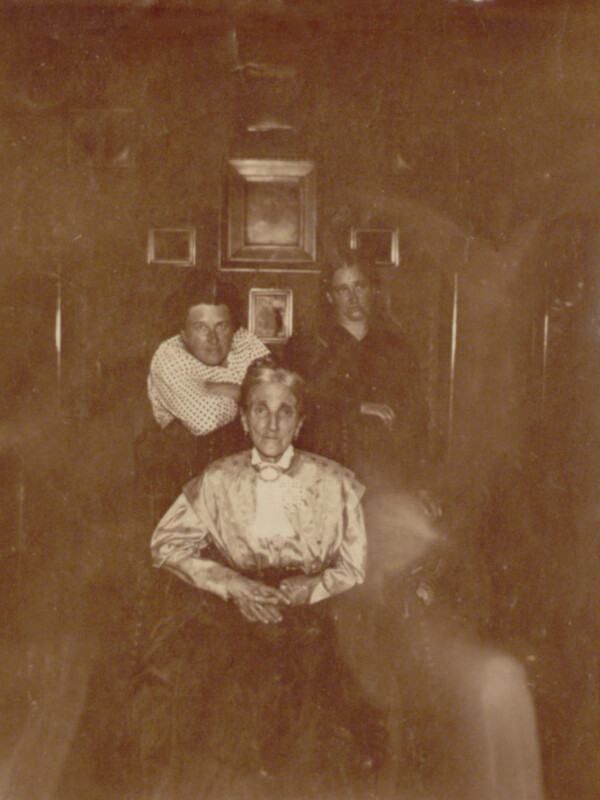
Hermine, Anna and Klara Klimt in the family apartment at Westbahnstraße 36
© The ALBERTINA Museum, Vienna
Klara Klimt (1860–1937) and Hermine Klimt (1865–1938)
Klara Klimt was the family’s eldest child. She is said to have suffered from psychological disorders since her childhood. It was likely for this reason that she never married. Klimt wrote about her in 1899: “[…] my older sister has gone insane a few years ago.” Around 1880, Gustav painted a portrait of his older sister (Portrait of Klara Klimt, c. 1880, ARGE Sammlung Gustav Klimt).
The second-born daughter Hermine never married either. Until Gustav Klimt’s death in 1918, the two sisters shared an apartment with their brother at Westbahnstraße 36. With her notes about her brother Gustav, Hermine left an important primary source for posterity. These reports, as well as various congratulatory picture postcards, give a sense of an intimate, albeit often taciturn, relationship between the family members.
Gustav Klimt’s passing in 1918 spelled the end of Klara and Hermine’s financial security. While they were initially able to live off the proceeds from the sale of drawings and paintings from their brother’s estate (estate stamp “Nachlass meines Bruders - Hermine Klimt”), they soon experienced financial difficulties. In 1924, Gustav indirectly and posthumously secured the sisters’ livelihoods once more: As the newspaper Illustrierte Kronenzeitung reported on 6 February 1924, Hermine and Klara were to be given an honorary pension (ongoing financial aid for artists and their families with low or no income) provided by the City of Vienna in the amount of six million crowns (c. 2500 euros) a year.
Extant exhibition correspondence from 1926 documents that Hermine Klimt had inherited the now lost Portrait of Anna Klimt. Despite their monetary hardship, the portrait of the mother was never sold, but was kept in the family. After the deaths of Klara and Hermine, it was passed down to Johanna Klimt (married name Zimpel) in 1938.
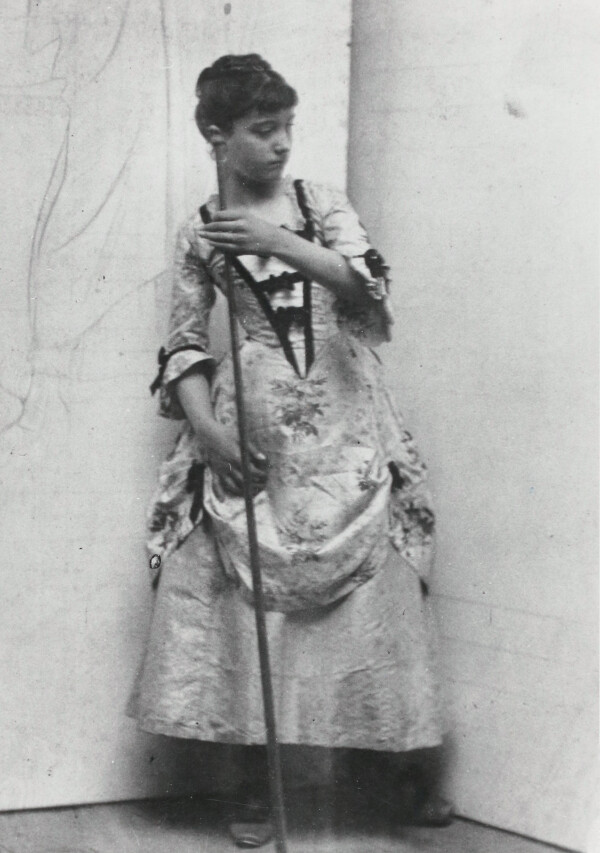
Johanna Zimpel as a model
© Klimt Foundation, Vienna
Johanna Klimt (married name Zimpel) (1873–1950)
Johanna was the youngest child of the Klimt family, and the only daughter who married. Her wedding to the accountant Julius Zimpel sen. took place in 1895, with Gustav Klimt acting as witness. The couple had four children: Julius, Gustav, Rudolf and Eleonora. Gustav Klimt’s relationship with his sister and her new family was very close. Klimt was not only uncle but also godfather and name-giver to the two boys Julius Gustav Zimpel jun. and Gustav Zimpel. Numerous postcards with congratulatory messages illustrate their intimate contact, while photographs document Christmases spent together and at least one joint sojourn on the Attersee.
The eldest son Julius jun. showed artistic promise early on, and his uncle fostered his talent. In numerous picture postcards, Gustav Klimt thanked the boy for drawings and pictures:
“Many thanks for the lovely wishes and the drawings, which were very pretty.”
He referred to the postcards’ motifs, which the boy drew himself. Julius Zimpel jun. studied at the Imperial-Royal Vienna Academy of Fine Arts from 1911 to 1914, and was later successful as a painter and graphic artist. In 1923, he became artistic director of the Wiener Werkstätte.
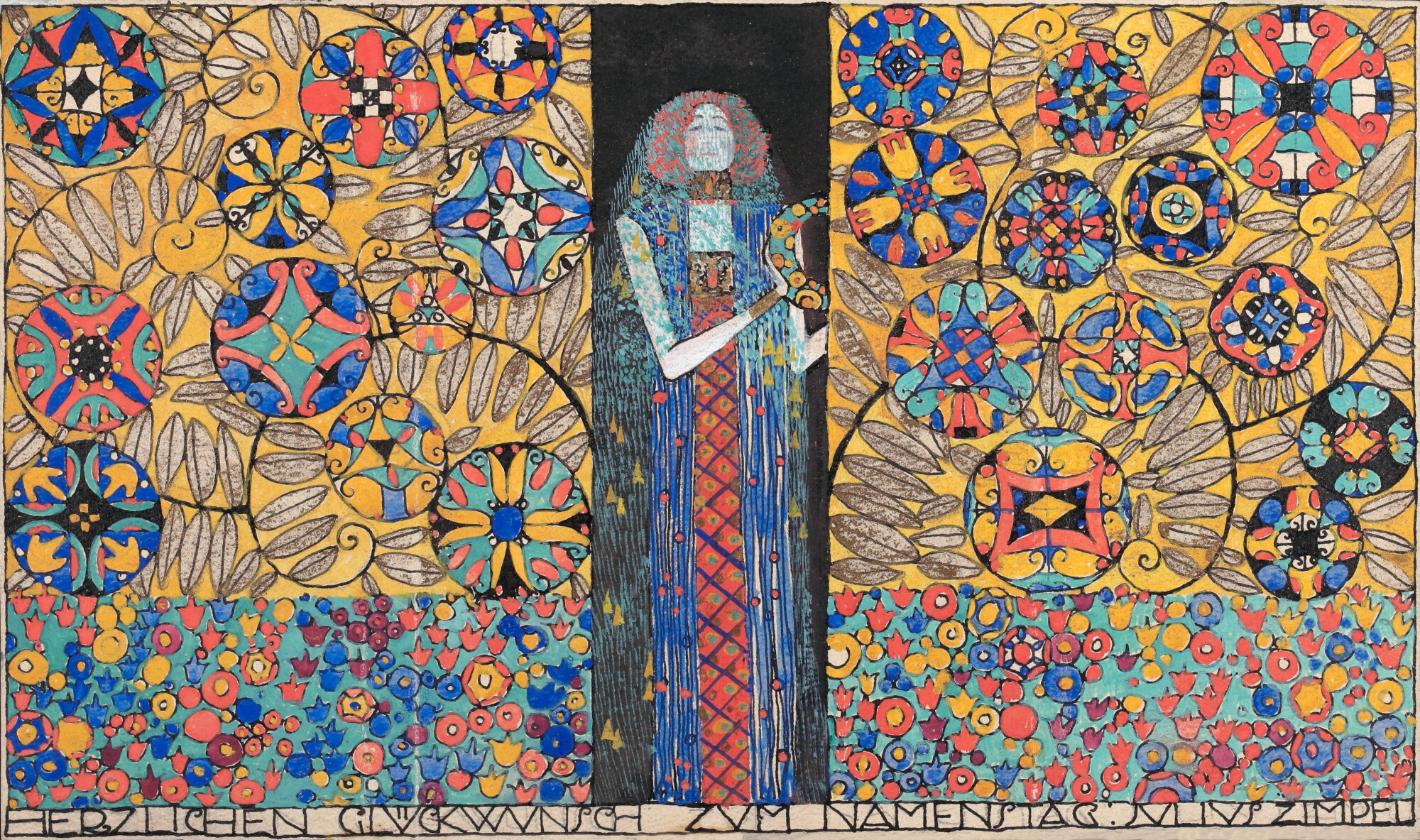
Julius Zimpel: greetings card for name day, Klimt Foundation, Vienna
© Klimt Foundation, Vienna
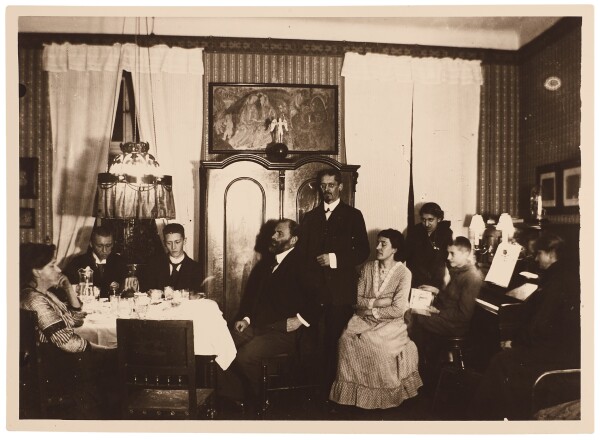
Gustav Klimt and the Zimpel family, December 1916, ARGE Sammlung Gustav Klimt, Dauerleihgabe im Leopold Museum, Wien
© Leopold Museum, Vienna
After Gustav Klimt’s death, Johanna Zimpel inherited several items from her brother’s estate. Most of these works likely hailed from the estate of her sisters Hermine and Klara, who died in 1937/38, including the Portrait of Anna Klimt. In a newspaper article on her passing in 1950, her apartment at Mollardgasse 11 was described as a “small Klimt museum.”
Literature and sources
- Sandra Tretter, Hans-Peter Wipplinger (Hg.): Gustav Klimt. Jahrhundertkünstler, Ausst.-Kat., Leopold Museum (Vienna), 22.06.2018–04.11.2018, Vienna 2018.
- Mona Horncastle, Alfred Weidinger: Gustav Klimt. Die Biografie, Vienna 2018.
- Christian M. Nebehay (Hg.): Gustav Klimt. Dokumentation, Vienna 1969, S. 9-27.
- Brief von Gustav Klimt in Wien an Maria Zimmermann (Mai 1899). S63/2.
- Ansichtskarte von Gustav Klimt in Seewalchen am Attersee an Julius Zimpel jun. in Wien (03.08.1906). S451.
- Taufbuch 1904 (Tomus 88), röm.-kath. Pfarre Gumpendorf, Wien, fol. 12.
- Taufbuch 1896 (Tomus 80), röm.-kath. Pfarre Gumpendorf, Wien, fol. 148.
- Trauungsbuch 1892/95 (Tomus 56), röm.-kath. Pfarre St. Ulrich, Wien.
- Die Bühne. Wochenschrift für Theater, Film, Mode, Kunst, Gesellschaft, Sport, 6. Jg., Heft 243 (1929).
- Illustrierte Kronen Zeitung, 06.02.1924, S. 5.
- Wien Geschichte Wiki. Julius Zimpel. www.geschichtewiki.wien.gv.at/Julius_Zimpel (07/24/2020).
- N. N.: Eine Schwester Gustav Klimts gestorben, in: Neues Österreich, 28.07.1950, S. 4.
- Rose Poor-Lima: Eine alte Wiener Künstlerfamilie. Das Erbe des Maler-Apostels Gustav Klimt, in: Neues Wiener Tagblatt, 29.12.1940, S. 17.
- Rose Poor Lima: Besuch bei Hermine und Klara Klimt, in: Wiener Zeitung, 22.10.1933, S. 14-15.
- Agnes Husslein-Arco (Hg.): Gustav Klimt und die Künstler-Compagnie, Ausst.-Kat., Upper Belvedere (Vienna), 20.06.2007–14.10.2007, Weitra 2007.

